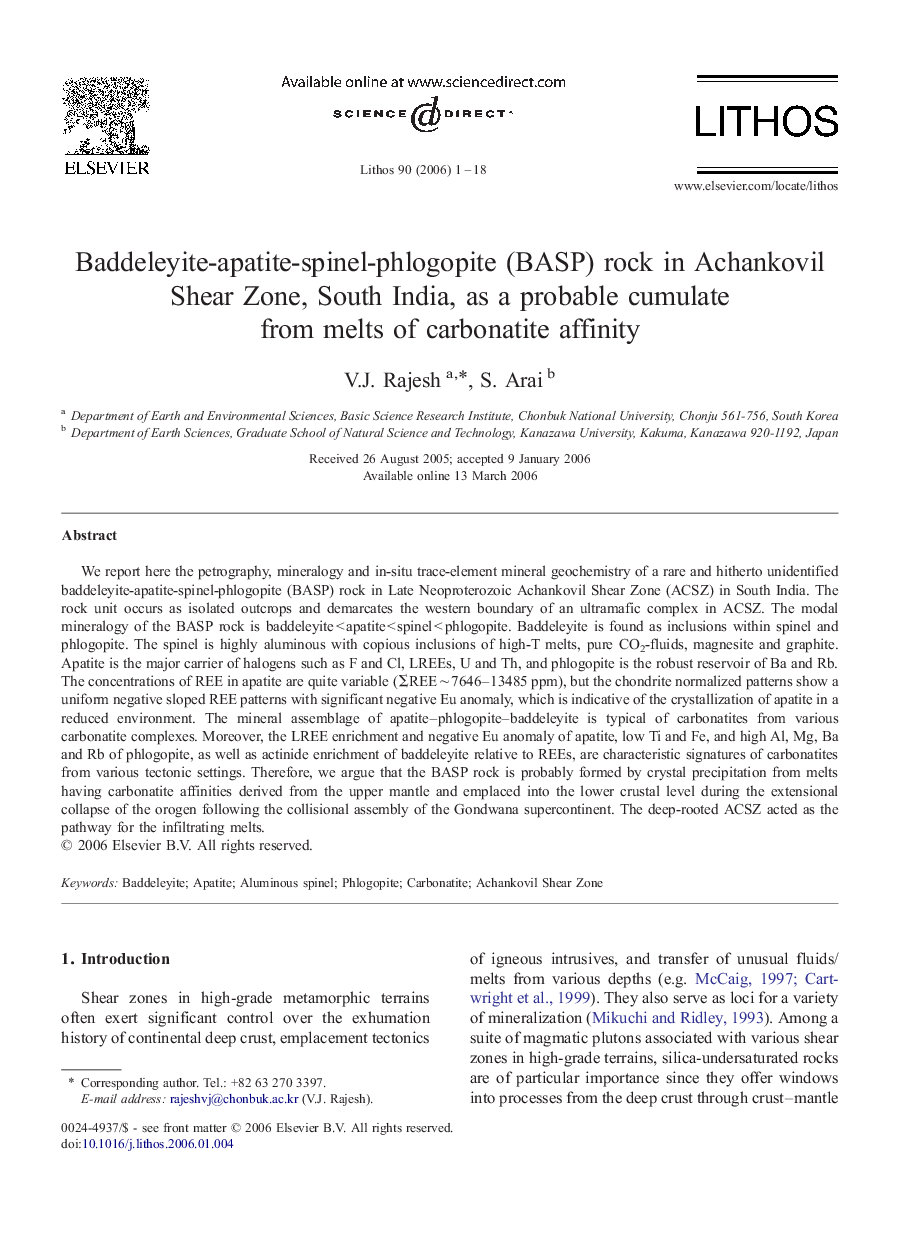| کد مقاله | کد نشریه | سال انتشار | مقاله انگلیسی | نسخه تمام متن |
|---|---|---|---|---|
| 4718030 | 1638778 | 2006 | 18 صفحه PDF | دانلود رایگان |

We report here the petrography, mineralogy and in-situ trace-element mineral geochemistry of a rare and hitherto unidentified baddeleyite-apatite-spinel-phlogopite (BASP) rock in Late Neoproterozoic Achankovil Shear Zone (ACSZ) in South India. The rock unit occurs as isolated outcrops and demarcates the western boundary of an ultramafic complex in ACSZ. The modal mineralogy of the BASP rock is baddeleyite < apatite < spinel < phlogopite. Baddeleyite is found as inclusions within spinel and phlogopite. The spinel is highly aluminous with copious inclusions of high-T melts, pure CO2-fluids, magnesite and graphite. Apatite is the major carrier of halogens such as F and Cl, LREEs, U and Th, and phlogopite is the robust reservoir of Ba and Rb. The concentrations of REE in apatite are quite variable (ΣREE ∼ 7646–13485 ppm), but the chondrite normalized patterns show a uniform negative sloped REE patterns with significant negative Eu anomaly, which is indicative of the crystallization of apatite in a reduced environment. The mineral assemblage of apatite–phlogopite–baddeleyite is typical of carbonatites from various carbonatite complexes. Moreover, the LREE enrichment and negative Eu anomaly of apatite, low Ti and Fe, and high Al, Mg, Ba and Rb of phlogopite, as well as actinide enrichment of baddeleyite relative to REEs, are characteristic signatures of carbonatites from various tectonic settings. Therefore, we argue that the BASP rock is probably formed by crystal precipitation from melts having carbonatite affinities derived from the upper mantle and emplaced into the lower crustal level during the extensional collapse of the orogen following the collisional assembly of the Gondwana supercontinent. The deep-rooted ACSZ acted as the pathway for the infiltrating melts.
Journal: Lithos - Volume 90, Issues 1–2, August 2006, Pages 1–18